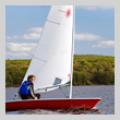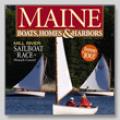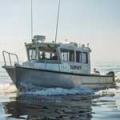Letters to the Editor - Issue 163
Don’t forget the square root
The world of sailing would be different indeed if the top speed of a 16-foot displacement hull were 22.4 knots as given on page 16 of your Jan/Feb 2020 issue! There are routes, roots, and square roots and it is the last one which is needed here: the maximum speed is “1.4 x the square root of the Load Waterline (in feet).” That gives a much more reasonable top speed of 5.6 knots for the 16-footer. I read every page of your wonderful magazine. Keep it up!
Joseph Snider
Southwest Harbor, ME
Editor: You are indeed correct, and in good company! A number of readers wrote to set us straight. Read on.
Formula corrected
Firstly, I would like to say great publication and keep up the excellent work. There was a typo in the column “A Sailor’s Medley: On a Vessel’s Hull.” The formula for hull speed forgot to mention that the square root of the waterline must be multiplied by 1.4. I only wish he were right. Think of the fun we would have at such great speeds.
C. Forbes Horton, Annapolis, MD
President, Forbes Horton Yachts
Another eagle-eyed reader
In Peter Spectre’s column “A Sailor’s Medley: On A Vessel’s Hull,” he writes that the formula for determining the theoretical top speed of a displacement hull is “1.4 x Load Waterline (in feet).” If only it were true! That would mean my 43-year old yawl with her 36-foot waterline should giddyap along at up to 50.4 knots! Of course he meant the formula to be 1.4 x the square root of LWL. I guess I’ll never see the knotmeter on my old boat pass 8.4 knots under normal conditions. Oh well.
Mark Gabrielson
Boston and Deer Isle, ME
A reasonable speed
On page 16 of your January/February 2020 there is a formula for determining the theoretical top speed of a displacement hull, but it is missing an important factor. The correct formula would call for the square root of waterline length. Imagine a 16-foot waterline wherry going 22.4 knots. But 5.6 knots seems quite reasonable.
Nick Fast
Hilton Head Island, SC
In defense of big engines
Don’t be so quick to condemn those big, new outboard engines. In the last two or three years of engine development, the game has really been upped. The new high-hp outboard engines run better, are more efficient, and require far less input from the user than past models. The outboard engines being built today are well designed and “smart.” They are computer controlled to operate efficiently—for example if a user tries to make a boat go too fast for the load it’s carrying, the engine’s computers will retard the spark and slow the engine to a workable speed.
Advances in engines are allowing boat designers to build new models that I think are amazing. And by the way the stern of the boat is an ideal place to put all this new power so the engines drive straight ahead not at an angle.
In particular, I like the return of the commuter concept—fast, efficient boats that take you where you want to go on the water. That’s Maine. People here get around on the water and they always have.
Lincoln Davis, Waldoboro, ME
Stetson Pinkham Corp.
Climate change and boats
Bravo to Ben Emory for raising the issue of climate change in connection to recreational boating in his letter printed in the January/February 2020 issue. The trend toward expanding numbers and types of powerboats with ever-increasing capacity for speed seems unstoppable—not only among aging baby boomers but also among our offspring, many of whom grew up with sail and went on to race competitively in college, only to turn to motorboats as the recreational vessel of choice in their thirties. While publications such as yours obviously cannot ignore the power craze, it would be encouraging to see more articles like that featuring the Hinckley Sou’wester 53. Art Paine’s article on the Hinckley nicely points out the ways in which a thoughtfully designed sailboat can offer ease and convenience of handling, safety and seaworthiness, creature comforts, and even (relative) speed—all without burning fossil fuels at a breakneck pace. Let’s hope his wish for cruising/racing sailboats to rise again may come true. A magazine of your stature and voice could help make that happen, and who knows, perhaps even nudge some of those speed-demon thirty-somethings who ponder climate and their future back to their sailing roots.
Emily Beck, Seal Cove, ME
The boat as she
On the December cover there was a photo of a Herreshoff 12½. It was a nice shot. The text referencing the article about the family that owned the Herreshoff said, in part, “and its family” referring to the Herreshoff. I was aghast, and exclaimed loudly to my wife, causing her to recoil, as she was sitting close aboard me.
Here is a Maine magazine that runs loads of articles about boats, to be read by boat owners and lovers, and you refer to a boat as an “IT”? Shame!
Boats are feminine and anyone who loves boats knows that they are always referred to as “she” or “her”. There was not a single person on your staff that knew better than to call any boat, much less a gorgeous Herreshoff, an “IT”? People that refer to a boat as an “it” generally are either landlubbers, or are too young to know any better.
Carlton Pinney, Hampden, ME
From the Editor: Actually we agree. The article inside the magazine did indeed refer to the lovely little Herreshoff as a “she.” We used “it” on the cover to avoid confusion between the boat and its female captain. For more on the legal arguments for referring to boats as she, see the article in our special annual publication Boats of the Year 2020. It can be found online at www.maineboats.com/boats-of-the-year.
















